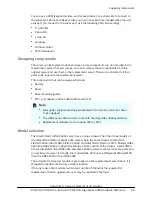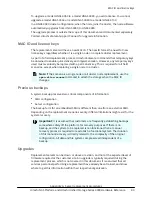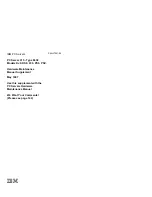
g. Upload both the diagnostic taken in the beginning of the procedure and this
diagnostic to TUF using the SR for the battery replacement.
Recovering or replacing a hard disk
Some hard disk drive failures require disk replacement, others only require performing a
recovery process. Use the recovery process to help ensure that all partitions are
recovered before proceeding with any further disk recovery or replacement procedures.
Unless you are certain the hard disk has failed, perform a disk recovery.
Hard disks can fail for a number of reasons, including corrupt sectors or erroneous
blocks of data. Typically, the RAID controller handles these types of errors and they do
not cause the server to fail.
More serious errors may cause a disk failure, causing one or both hard disks to fall out of
the RAID. Should one partition of a disk fail, attempt a disk recovery. If a partition fails
repeatedly, replace the hard disk. If all the partitions fall out of RAID, replace the failed
drive.
Caution:
When removing an HDD, take extreme care to only press one HDD
lever. The push button latch mechanisms are close together and, if not
careful, both latches can easily be depressed at one time.
This causes an
immediate loss of access
.
Important:
Before you consider replacing a hard disk drive, be sure you
understand the following points:
■
Do not attempt to replace an HDD unless you are instructed to do so by
Hitachi Vantara Support Connect.
■
Failed hard disks are hot-swappable, so a failed hard disk can be replaced
without shutting down the server. However, there are serious risks in
trying to swap a drive that is
not
failed.
■
Do
not
assume that because the red LED is illuminated that a drive is
faulty. Under a RAID rebuild/recovery, the red LED would be illuminated. If
the drive is failed and needs replacing, you can remove it from the server.
■
Do
not
replace a drive that has not actually failed. If the disk shows signs of
failure, shut down the server before replacing the drive and restarting the
server.
■
There should be no reason to pull out a hard drive while it is in a known
good
configuration,
and doing so can potentially lead to data corruption.
■
Unless you are certain the hard disk has failed, perform a disk recovery.
■
Disk redundancy is unsupported while the disk is removed from the
server.
See
Recovering a hard disk drive (on page 75)
Replacing a hard disk drive (on
as appropriate.
Recovering or replacing a hard disk
Chapter 5: Replacing server components
Hitachi NAS Platform and Hitachi
Unified
Storage Series 4000 Hardware Reference
74
















































